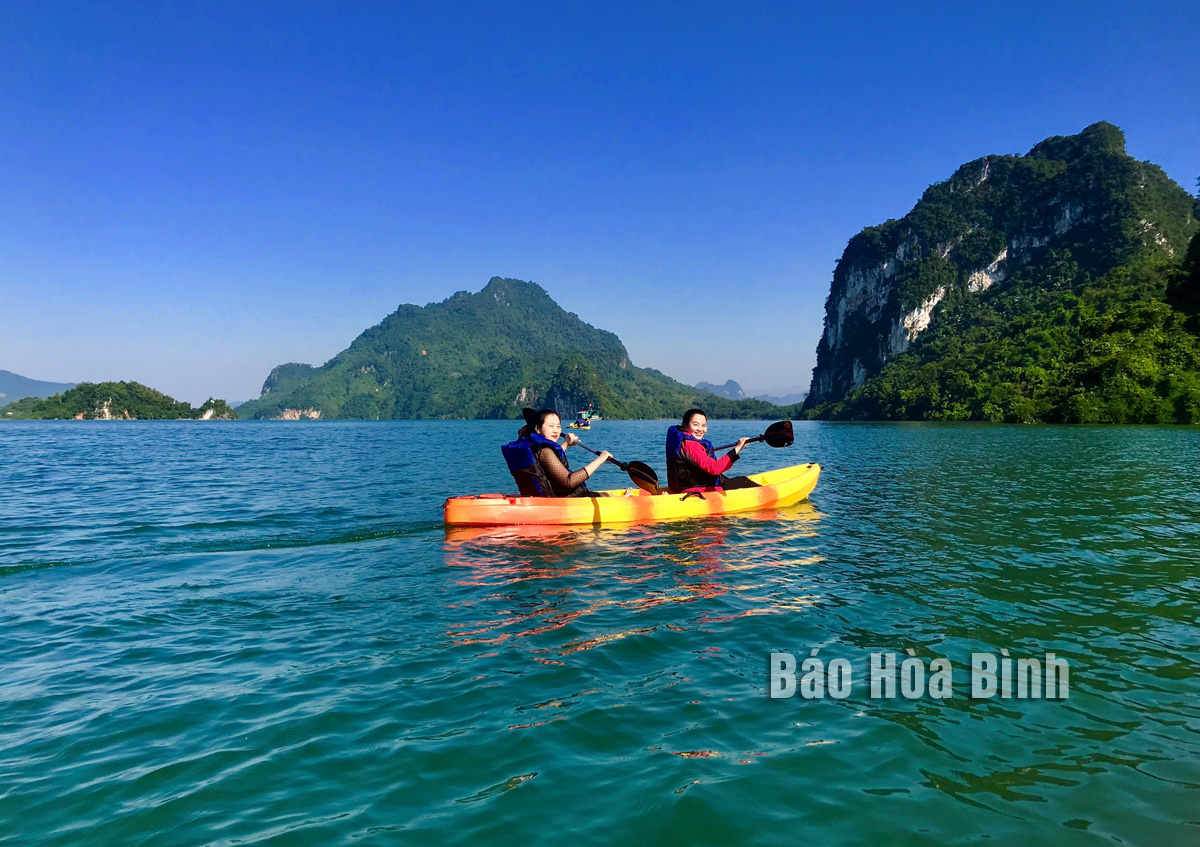
Together with community-based tourism, Mai Chau district is focusing on developing eco-resort tourism around Hoa Binh lake in Son Thuy commune.
Tourists enjoy kayaking on Hoa Binh lake.
Son Thuy commune - home to Muong and Thai ethnic groups - still retains untouched nature with rolling mountains and peaceful villages along Hoa Binh lake, thus attracting tourists, especially young backpackers. In the winter, the area is often blanketed with thick fog, reminding many people of the famous resort town of Sa Pa in the northern province of Lao Cai.
Rich natural resources and unique cultural identity are advantages for the commune to develop tourism. Initially, some backpackers discovered the area and came to explore the area. Later, some businesses surveyed and invested in building hotels and resorts to meet the high-end tourist market segment.
Notably, Mai Chau Hideaway resort and Ba Khan Village in Son Thuy commune affirmed their positions in attracting visitors to the Hoa Binh lake tourist area in particular and Hoa Binh tourism in general.
Ha Thi Lieu, deputy head of the Culture and Information Department of Mai Chau district, said that the formation of high-end ecological resort destinations helps increase the attractiveness of the Hoa Binh lake tourist site, promoting local tourism. Some households in the area have provided homestay services for tourists, offering more choices to experience local culture. Local eco-resorts have recovered strongly after the COVID-19 pandemic, inspiring investors to continue to seek investment opportunities.
Resorts and hotels in the tourist area attract tourists all year round, the room occupancy rate ranges from 50 - 70% on working days, and 90 - 100% on weekends. In particular, Mai Chau Hideaway is preferred by international visitors with about 70% of its guests coming from European and American countries.
Located just a 20-minute drive from Hoa Binh City, Ora Hill Farmstay & Glamping Hoa Binh is a captivating new destination nestled in Mo hamlet, Bình Thanh commune, Cao Phong district. Combining farming with leisure, this tranquil retreat is perfect for those seeking balance, joy, and an immersive experience in the expansive beauty of nature.
Muong Bi - Tan Lac is renowned as one of the four famous Muong regions in Hoa Binh province. Blessed by nature with a favourable climate and stunning landscapes, Tan Lac holds great advantages for tourism development. The local tourism industry has made remarkable strides in recent times thanks to the attention and support from the local authorities and sectors.
With its strategic location, well-developed transport network, and diverse soil and climatic conditions, Hoa Binh is emerging as a must-visit destination in Vietnam's northwestern tourism corridor. The province boasts numerous attractions, including the Kim Boi hot springs (Kim Boi district), the Dau Rong cave complex (Cao Phong), the Mai Chau valley (Mai Chau), and the iconic Hoa Binh hydropower plant.
The northern mountainous province of Hoa Binh has been listed among the 71 most beautiful places to visit worldwide by the prestigious US travel magazine Condé Nast Traveller.
Hoa Binh province’s rich natural and cultural resources position it as a prime location for developing community-based tourism (CBT). In recent years, support from central and provincial policies, as well as assistance from non-governmental organisations, have encouraged local ethnic minority and mountainous communities to actively engage in the sector.



